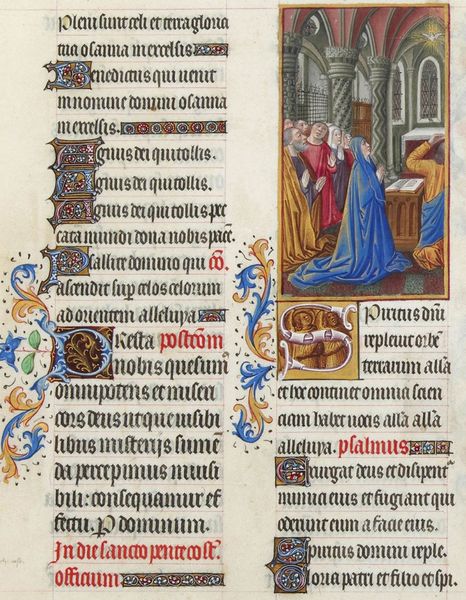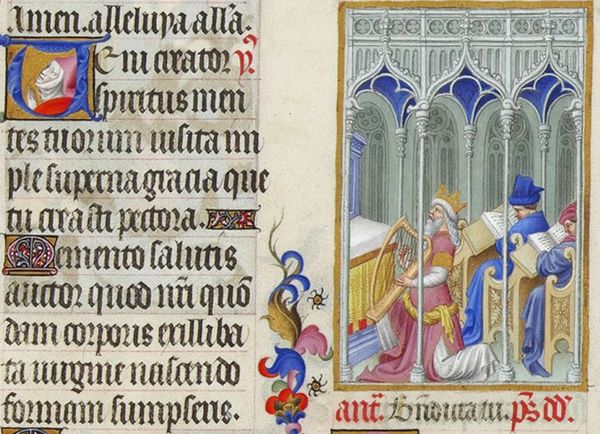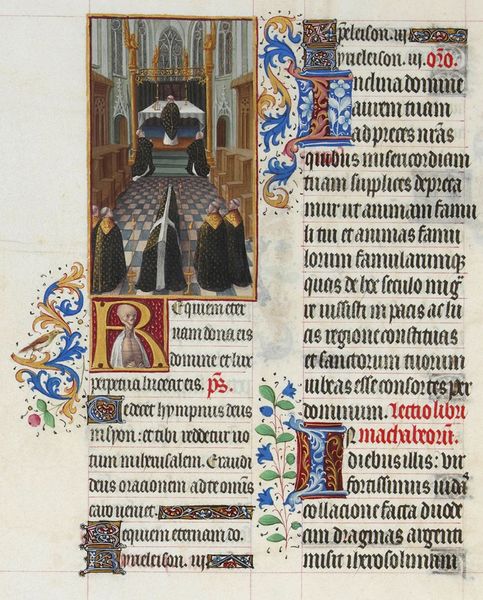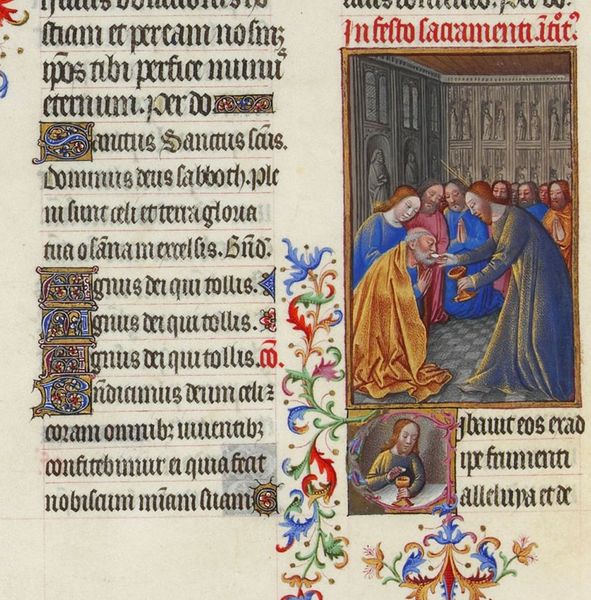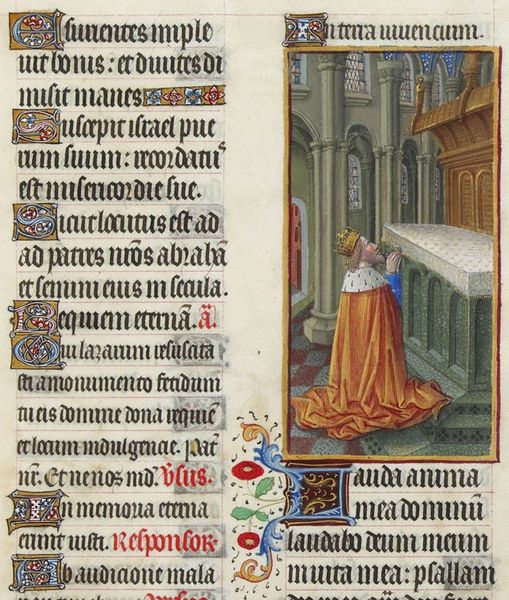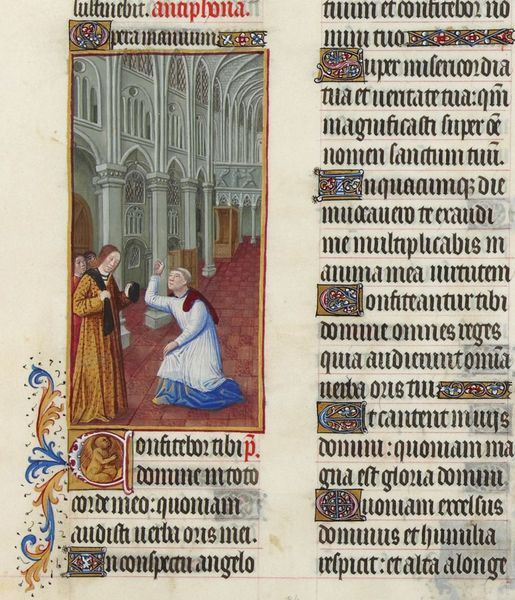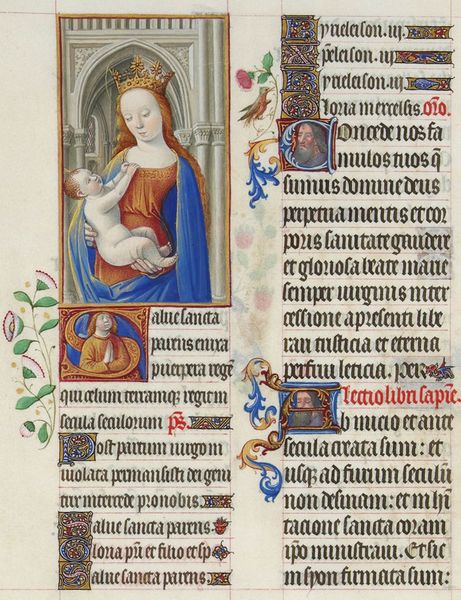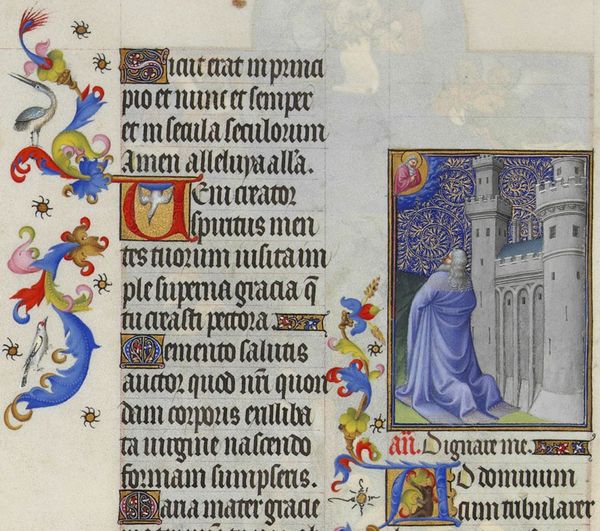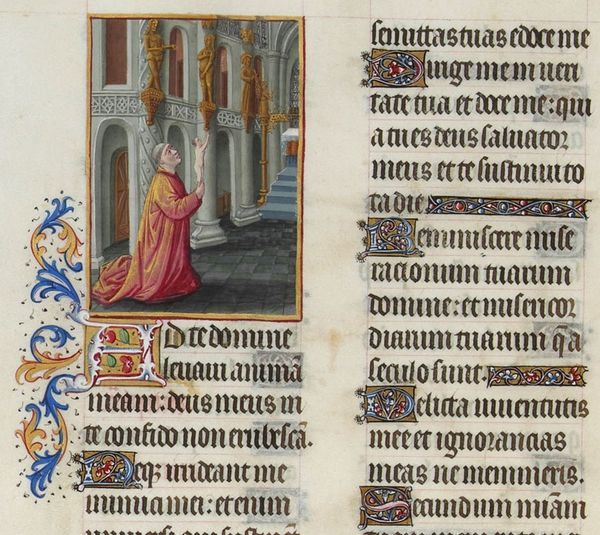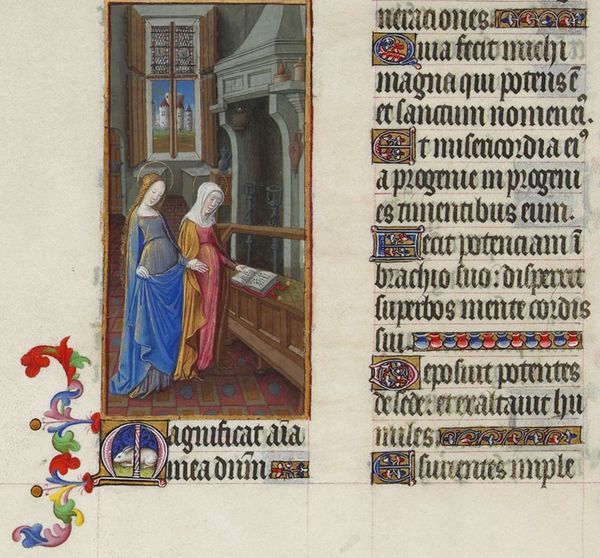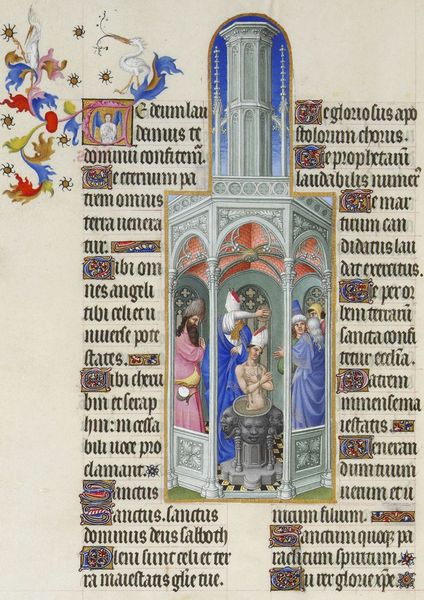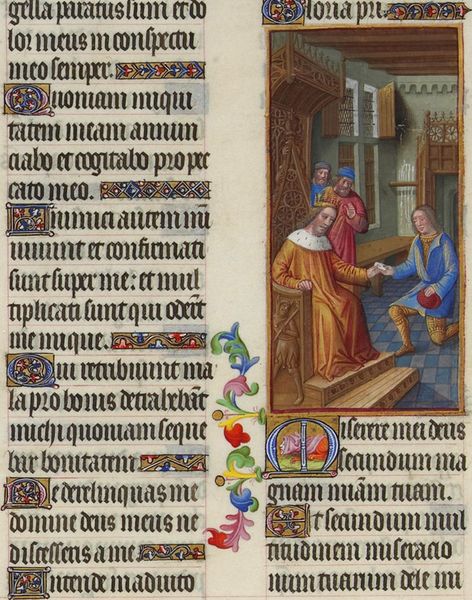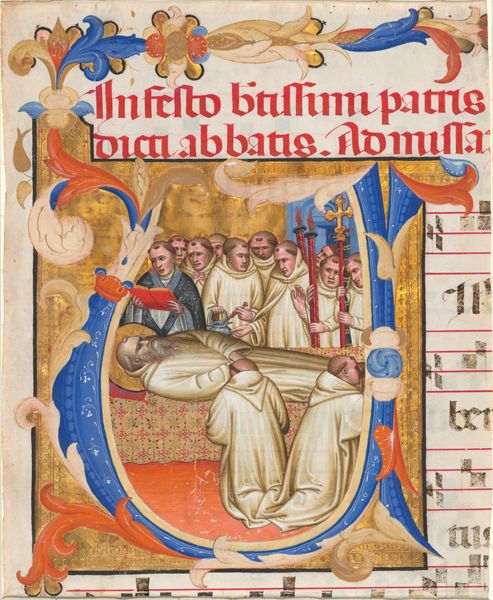
tempera, painting, ink
#
portrait
#
medieval
#
narrative-art
#
tempera
#
painting
#
ink
#
international-gothic
#
mixed media
#
miniature
Copyright: Public domain
Editor: This is "The Pope and His Cardinals," a tempera, ink, and paint on parchment miniature presumably by the Limbourg brothers, made sometime during the Medieval or International Gothic period. I find the composition quite interesting – the figures are flattened, and the palette is quite limited. What can you tell us about the historical context of this work? Curator: It's fascinating to consider this image within the broader history of the papacy and manuscript production. These illuminated manuscripts were extremely costly, and served as potent symbols of power, reflecting both religious and secular authority. What message do you think it conveyed to its original audience? Editor: Perhaps that the Church was a wealthy institution, capable of commissioning such elaborate artworks? It also looks like the imagery would convey a certain sense of order and established hierarchy. Curator: Precisely. Consider the public role of the papacy during this period. These miniatures weren't just decorative; they were carefully crafted to reinforce specific social and political narratives. The International Gothic style itself, with its elegance and refinement, served to further legitimize this authority. Editor: I hadn’t considered it so explicitly political. So, the choice of materials, the artistic style—everything contributes to constructing a particular image of power. It definitely casts a different light on it. Curator: Yes, and examining who had access to this imagery is crucial. This wouldn't have been for mass consumption. The creation and viewing of such art were carefully controlled. Does understanding its exclusivity affect your interpretation at all? Editor: It does. Knowing it was meant for a very specific, elite audience helps me understand the purpose of the visual language and symbolism used here. It emphasizes the idea of curated power. Curator: Exactly. This conversation just shows that a historical viewpoint, by exploring socio-political forces, can truly reshape how we see even the smallest details within an artwork. Editor: I agree! Thinking about who this artwork was meant for, and the visual strategies the artist uses, makes all the difference.
Comments
No comments
Be the first to comment and join the conversation on the ultimate creative platform.
